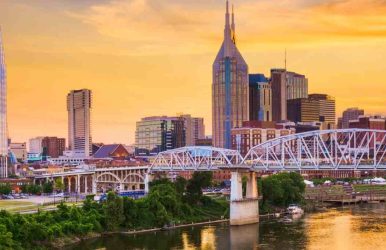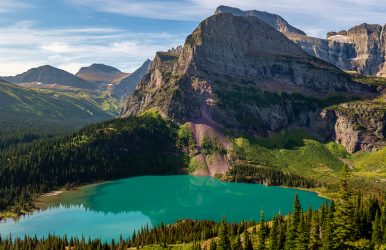Top Fun Things To Do In Nashville TN For Couples – Fun Guide
BY sagnika Feb 13, 2023
Are you planning a trip to Nashville? Do you want to know what romantic activities there are in Nashville, Tennessee? Are you confused about planning the perfect romantic weekend for you and your partner? Then you have arrived at the right destination. Stay tuned to read about all the romantic things you can do with your partner in Nashville, Tennessee! Top Fun Things To Do In Nashville TN For Couples - Fun Guide Welcome to Tour & Travel’s ultimate Nashville guide! Today we will talk about all the fun things to do in Nashville for couples. With Valentine’s Day around the corner, you can find the closest beach to Nashville and go for a weekend getaway. But that’s not the only thing you can do - hitting the beach seems like a pretty great idea, but there’s so much more to do in Nashville. Stay tuned to find out! 1. Visit The Grand Ole Opry: The Grand Ole Opry is an iconic spot and perhaps the top attraction you will find in Nashville. This is the show that actually made country music really popular. How can you miss this show, especially when you are traveling with your partner? Review By Lisealleyne: I fulfilled my wish to visit the Opry, and it was really everything I thought it would be and more. We didn't arrange a tour but were able to pick one up easily when we arrived and did the backstage tour, which gave us views of the dressing rooms and culminated with going on stage and seeing the 'golden circle. 2. Explore The Ryman Auditorium: A Nashville romantic getaway would be incomplete without a visit to the Ryman Auditorium. The auditorium is so much more than just a tourist spot. It’s literally a slice of history. This is exactly where Johnny Cash first met June Carter - come on!!! Review By Isa B: We did the VIP tour on a Wednesday's summer morning. To learn all the intimate information about the Ryman and its singers, we had reserved the VIP tour. We were very pleased. George was an awesome tour guide, and he was very knowledgeable. I would strongly recommend it, this was customizable, and we really loved it. It is about 2 hrs of walking, including steps. 3. Spend Quality Time At Belle Meade Historic Site & Winery: If you are seeking fun things to do in Nashville TN for couples, then you must plan a visit to Belle Meade Historic Site & Winery and spend some quality time here. Hospitality and history - that is exactly what Belle Meade stands for, and we can promise that’s exactly what you will get here. Review By Matt M: Great historical horse plantation. If you enjoy history, specifically southern history, this is a great half-day visit. A guided tour of the house takes around 45 minutes. Complimentary wine tasting after. You are then free to walk the extensive grounds, including a carriage house, mausoleum, diary, old slave quarters, and more. 4. Check Out The Country Music Hall Of Fame And Museum: There are so many fun things to do in Tennessee for couples, especially when you start looking for romantic getaways in Nashville TN. You can’t just spend days in a music city without visiting the Country Music Hall of Fame and Museum. Review By Elisa G: Take your time to learn about the exhibits using the audio tour, and make sure you don't miss any of the areas in the museum and hall of fame. Add the tour to the famous RCA Studio B, which leaves from the Country Music Hall of Fame. You will never forget the experience. A piece of advice: learn about the many famous artists who recorded songs at the RCA Studio B, apart from Elvis, and think about as many as you can while visiting. 5. Go Partying In Downtown Nashville: You don’t have to google ‘romantic getaways Nashville TN’ to find out that partying in downtown Nashville is perhaps one of the best things you can do with your partner! From honky tonks, historical attractions, and galleries to live music, there’s so much to do in Nashville. Review By Katie L: We had a blast being in the throngs of people who were smiling, dancing, singing, and having just as much of a good time as we were. What was also great was that it was people of all ages had a great time. From people in their 20s to people who look like they are in their 80s. I see why it's such a popular place. 6. Hiking At Forest Hills: The Forest Hills is a good neighbourhood where you can go hiking with your partner! It is one of the expansive parks because Nashville is filled with scenic views all around. The forest also has a 1200 acre Radnor Lake perfect to visit with a partner. With wildlife such as beavers, white tailed deer, river otters and muskrats, you can check out the animals while on the hike! This is only applicable if you and your partner both are adventurous! Review By Brandi S: This was a blast! 4 friends on a weekend getaway and this was a great addition to our trip! Would highly recommend. There was minimal hiking. 7. Centennial Park It is a well known place even though a little out of place but one of the unique things to do in Nashville TN! The park has a Parthenon which is quite a replica of the popular temple at Athen, Greece. It was during the Tennessee Centennial Exposition in 1897 that a temporary structure was intended. It was appreciated so much that the structure was not removed. The statues inside of the structure have also been replicated so it creates a significant and substantial art collection. There are tree-shaded paths and monuments across the park! Review By Christine C: The park is gorgeous and parking is free. Lots of places to lay out or have a picnic or run around. Family friendly place and shaded areas if you get too hot. The Parthenon makes a great backdrop. It only costs $10 to go in and it tells how the state of TN… 8. Get A Free Admision At An Art Gallery! There are several art galleries in Nashville so you can get admission in one of the Art Crawl! You can either go to studios or art galleries where you can check out art by renowned artists. If you are an art enthusiast, you gotta visit The Arts Company, Hatch Show Print Haley Gallery and Rymer Gallery. What can be more romantic than couples sharing colors thus creating pictures and paintings together! Aww! Do not let go of this opportunity especially when there are literally guided tours which will help you to know the place better. Review By Brian C: Thanks to torrential rain we dashed into Legends Bar on Broadway Nashville......thank you rain,it led us to a fabulous night, great live music, tasty local food,drinks and brilliant atmosphere...... 9. Going Dancing At Honky-Tonk This is one of the coolest places to visit Nashville with a street lined by bars with some of the best live music to offer! You can enjoy your heart out with this play as they do not cover any extra charges when you visit these venues. So go dancing with your partner and enjoy yourselves to your heart’s content. You can visit some of the best places in this area such as Legends Corner, Tootsie’s Orchid Lounge and Robert’s Western World. Review By SophieWilliams: We were looking for a meal & they were still serving food at 9pm which was great. It was quite loud even at the back of the room but it's a great atmosphere in there when bands are playing. My husband ordered the nachos & our eyes nearly… 10. Celebrate Love At Love Circle A Hilltop landscape, the Love Circle is a perfect escape for you to take your partner for a picnic. The hilltop is located 745 feet above sea level and is a mile north of the Centennial Park! The address is Nashville, TN 37212, USA! One of the vantage points in Nashville, it is quite high and implies that couples can share their time either to picnic, romantic evening strolls or scenic views of Music City! Review By William M: This is a local spot to get great views of Nashville, grab a picnic lunch and make a time of it. Today we saw someone propose. It was great. Frequently Asked Questions (FAQs): Check out the most frequently asked questions about the fun things to do in Nashville TN for couples mentioned below in detail! 1. What Should Couples Do In Nashville? Ans: Couples can do several fun things in Nashville, like,Take a walk to admire the beautiful murals.Check out a popular Nashville Absinthe Bar called Green Hour.Take a ride on a carriage and explore downtown Nashville.Check out Ryman Auditorium.Take a scenic ride on horseback. 2. Is Nashville A Good Place For Couples? Ans: There are serval cities in the United States that are great couple getaways, and Nashville is one of those places. Known for being the flagbearer of country music, Nashville has some of the best dining options and other exciting romantic attractions. 3. What Is The Number One Thing To Do In Nashville? Ans: The most popular activities to do in Nashville are as follows,Go to the Nashville Zoo.Visit the Frist Art Museum.Check out The Hermitage.Hog at Bluebird Cafe.Explore the Country Music Hall of Fame & Museum. 4. What Is There To Do In Nashville, Not Bar Hopping? Ans: So you don’t want to do bar hopping in Nashville, but you still might be up for some alcohol. In that case, you will be happy to know that Nashville is not just home to country music - the city is also home to several distilleries, breweries, and Wineries. And It’s A Wrap! And that’s a wrap on the top five fun things to do in Nashville TN for couples! What next? Are you already planning a trip to Nashville? Please, tell us about your thoughts on choosing Nashville for your next romantic getaway. Don’t forget to share your travel experience with us in the comments below! Read More: Top 10 Best Travel Apps To Use The Best Tips To Travel Around The World Where Is The Most Popular Spot In The World To Take A Selfie?













